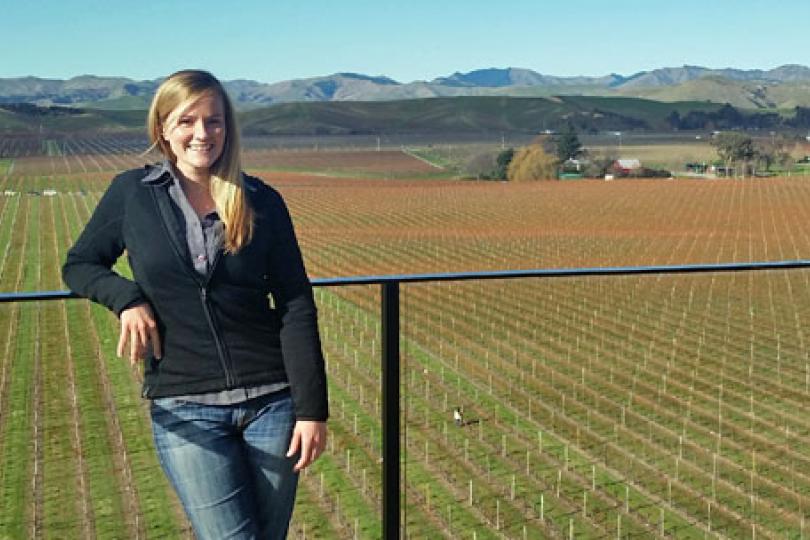Meredith Niles: How social capital and social media impact food security during extreme weather events
How can social capital and social media benefit communities experiencing climate shocks or extreme events?
Meredith Niles, an assistant professor and faculty with the University of Vermont Food Systems Program and Department of Nutrition and Food Sciences, examines food systems sustainability and policy with a focus on food security and climate change.
For her dissertation research she explored farmers’ perception of climate change, which has since grown into a broader focus on food security and climate change across many scales. She works to explore the direct impacts of climate change on smallholder farmers in low-income countries, who are at the forefront of experiencing challenges globally, and some of the system level changes to food systems from climate change in the United States, which could also impact food security here.
She is now collaborating with CGIAR (formerly the Consultative Group for International Agricultural Research), a global partnership that unites organizations engaged in research for a food-secure future, to work with smallholder farmers in Africa and Asia being impacted by climate change. She is analyzing data gathered across more than a dozen countries to determine how farmers are affected by climate change and extreme events. She is also looking at how historical climate data correlates with food security, to see how shocks and extreme events affect households directly.
Perhaps not surprisingly, she has found major impacts on people who are dependant on food they grow themselves, or who are dependant on selling agricultural products for their income. She has, however, also discovered that better food security, especially in drought conditions, is related particularly to access to financial factors, for example the beneficial role of microfinance and other loan processes.
Perhaps most interesting is that some emerging research, which is still in revision, reveals the importance of social capital in communities’ responses to climate change and the impact on food security outcomes. In low-income country communities where organizations work together more closely, households in those communities have greater social capital in group memberships, and higher rates of food security.
This connection between social capital and better food security outcomes has also been revealed by her research in the United States. Results from Vermont (also in revision) indicate that community response to Hurricane Irene, when roads were closed and many communities were isolated, was impacted by the interplay of social and physical capital. In some parts of the state, communities are losing physical places to gather. Loss of physical places (e.g. the general store, the local school) was perceived by community members to also impact social capital, which challenged robust community response to the disaster, leading to an indirect way to think about disaster response and preparedness. Niles says this could have major implications for rural development.
Taking this one step further, Niles’s newest interests are exploring links between food security and climate via new technologies, currently analyzing how people communicate about food and disasters during extreme events via Twitter. Using a collaboration between the University of Vermont and Twitter, she and colleagues are analyzing how people tweeted about disasters and food terms between 2011 and 2016 during five of the nation’s historically costliest weather-related events. They are analyzing how people tweeted about certain kinds of terms over time, including terms that indicate preparation or recovery, as well as terms around food and other needs (e.g. generator).
Their results, about to go into review, find that the type of disaster has significant impact on when people tweet about these issues. Twitter activity was more likely before hurricanes while it was most likely during tornadoes and the Louisiana flooding event had peak twitter activity after the largely unanticipated event. Their results also suggest that it is “average” Twitter users that tweet most during these events, suggesting that it might be a useful tool for disaster communication and preparation. In the future, she’s hoping to pursue research to explore how extreme events affect transportation routes in the United States, and its implications for food security.

